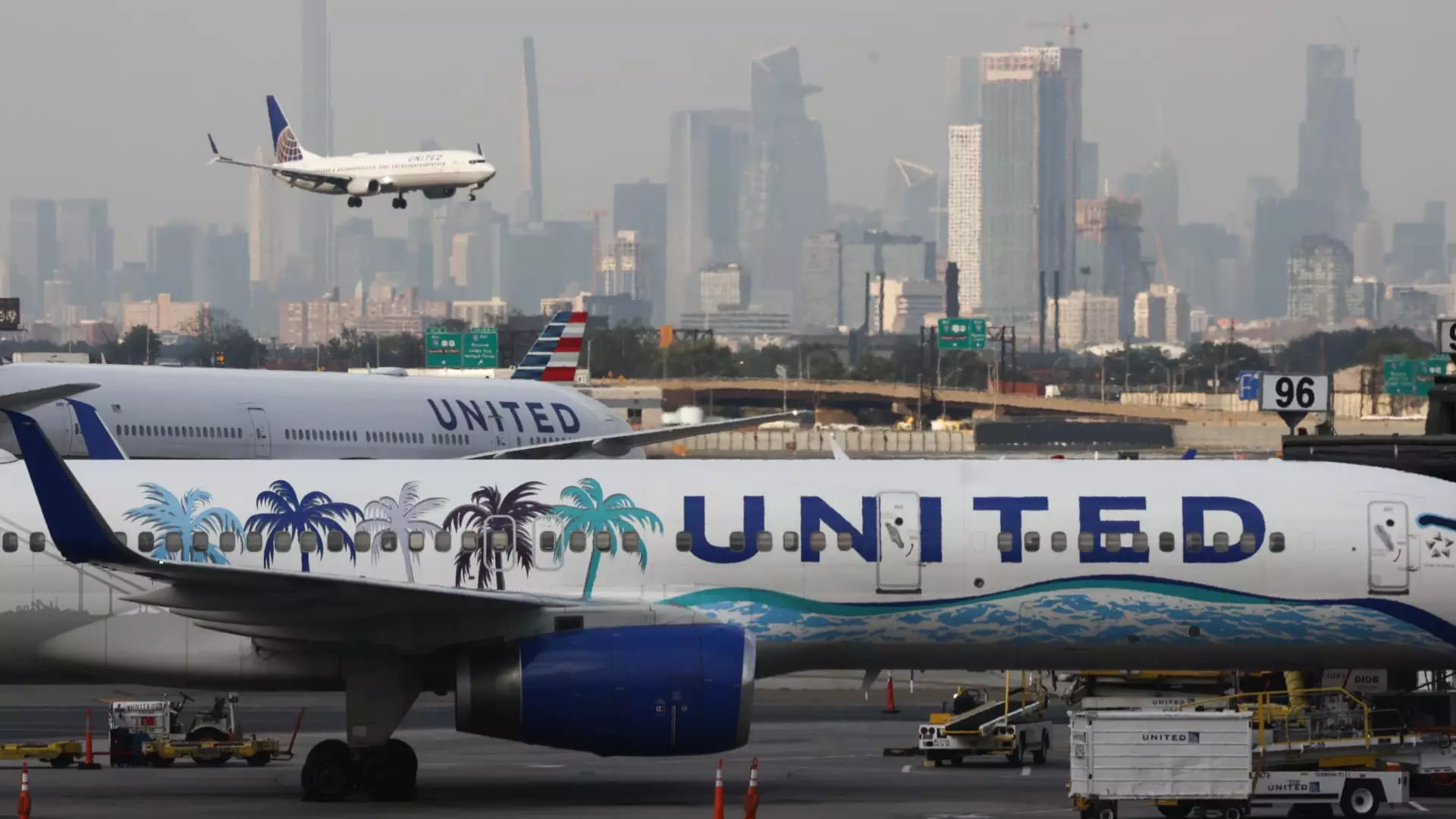Recent economic indicators have sent shockwaves through the airline industry, leading to stock declines that are hard to ignore. With U.S. airline stocks plummeting to their lowest since late last year, it’s time to dissect the underlying issues that are driving this downward spiral. Chief among them is the fresh round of tariffs imposed by President Donald Trump on key trading partners like Mexico and Canada, alongside escalating tariffs on Chinese imports. The ramifications of these fiscal maneuvers extend far beyond a mere political chess game; they could usher in higher prices for consumers. As noted by executives from retail giants like Best Buy and Target, the added cost burden could hit American families just as they begin to navigate the often-expensive spring travel season.
Airlines were initially seen as havens of economic promise, buoyed by strong consumer demand and a relatively stable growth outlook. However, recent data reveals a troubling fall in consumer spending—the first decline in nearly two years, as highlighted by the U.S. Commerce Department. Such a trend raises red flags for airlines, especially with looming tariffs that could deter travelers from spending money on attractions and experiences beyond the flight itself. There’s certainly a paradox here; while demand for air travel had been robust, these newfound economic uncertainties could shrink disposable income and alter travel habits for many Americans.
According to Deutsche Bank, the economy may be entering a troubling ‘soft patch’ that raises questions about demand elasticity, particularly for price-sensitive travelers. With the critical spring travel season on the horizon, many airlines may face an uphill battle in attracting customers. Although some sectors, like corporate travel, remain largely unaffected, the sentiment among airline executives suggests a looming vulnerability. United Airlines CFO Mike Leskinen has previously reported positive trends in international leisure travel, but he also acknowledged that domestic leisure is merely treading water. This tepid performance serves as a warning—in times of economic uncertainty, discretionary spending can evaporate quickly.
When examining the overall decline, domestic-focused carriers like JetBlue, Allegiant, and Frontier Airlines have each seen considerable drops of over 8%. Such figures do not merely represent a stock market fluctuation; they symbolize the panic that investors feel when confronted with an unclear economic forecast. Full-service carriers, which have managed to remain relatively buoyed by international routes, may find themselves caught in a tightening vice as consumer sentiment deteriorates. While the airlines have worked to stabilize their operations, the unpredictability of tariffs and their direct effect on purchasing behavior continues to loom large.
While the airline industry was once heralded as a beacon of resilient economic growth, current conditions are casting a long shadow. The convergence of tariffs, consumer spending drops, and emerging economic uncertainties portends a turbulent flight path ahead. Airlines will need to refine their strategies and expectations if they hope to weather this storm. It’s a challenging time, and the stakes couldn’t be higher for both consumers and the companies striving to serve them.


Leave a Reply